You have someone who is limited with several different shoulder mobility measures, which should you tackle first? Find out in this post.
Read More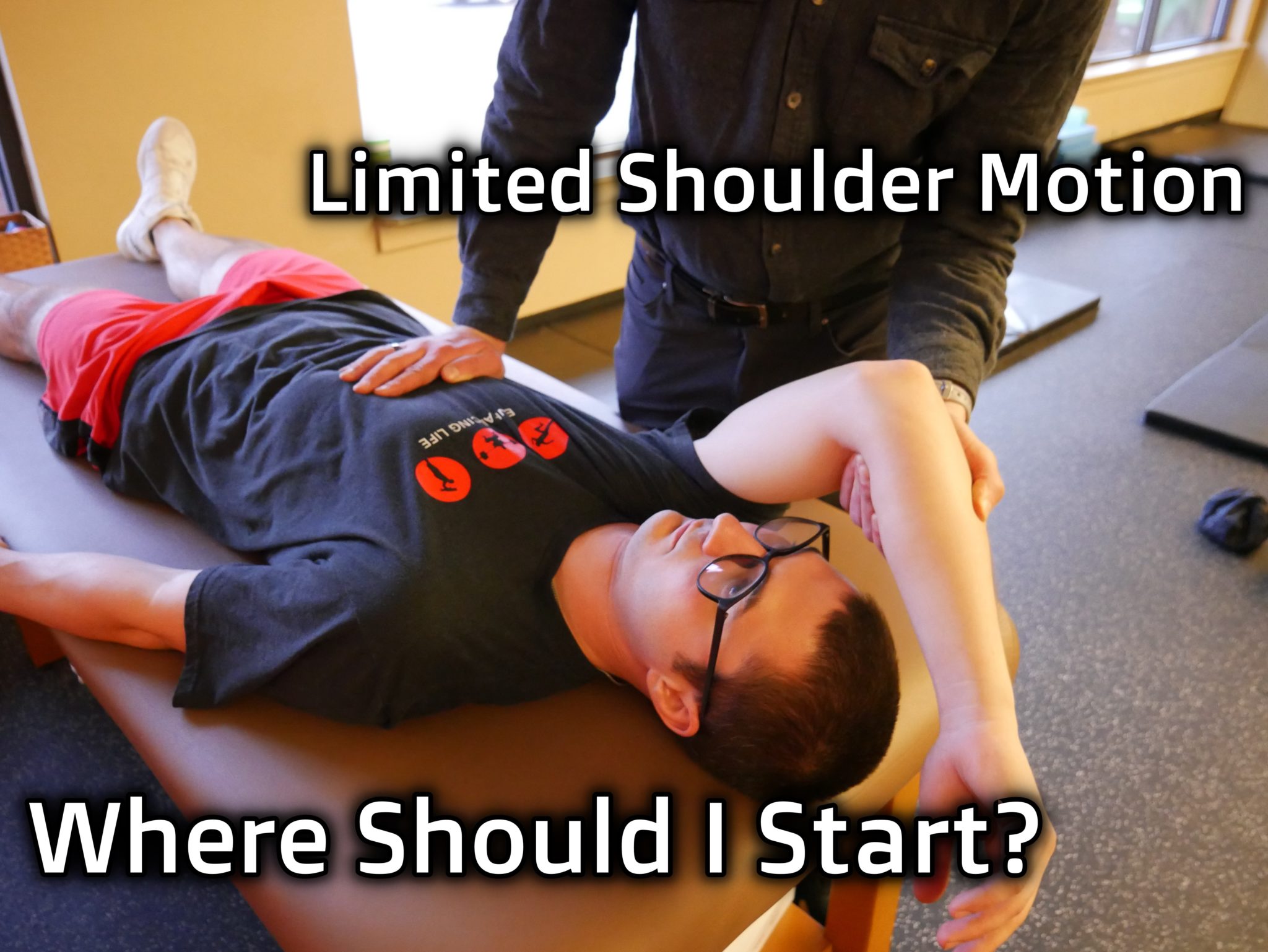
Health and Performance Made Ridiculously Simple

You have someone who is limited with several different shoulder mobility measures, which should you tackle first? Find out in this post.
Read More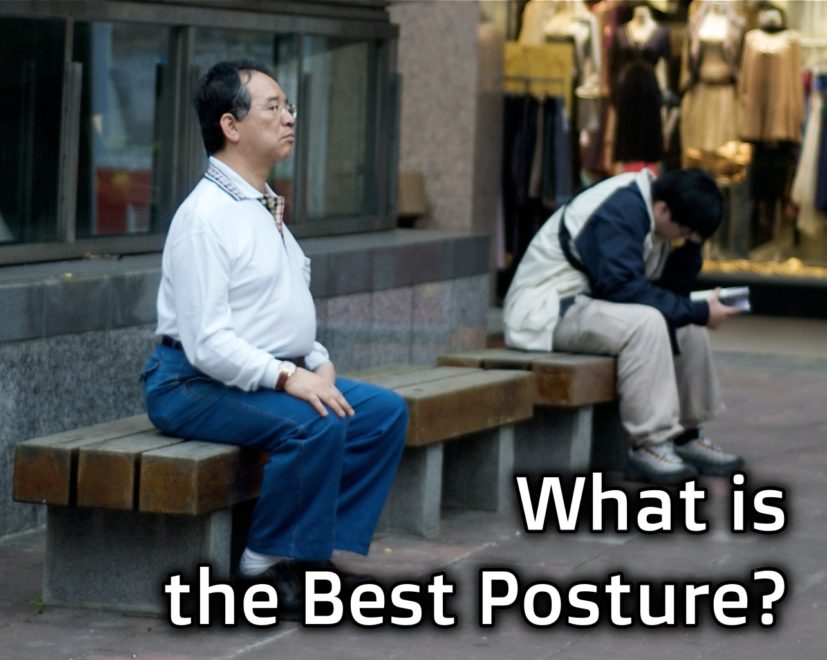
Ever argue with someone about good posture? Are you ready to tell them it’s all bullshit? We are meant to move, so the best posture is one that is constantly changing. In fact, research shows movement variability, the changes we unconsciously make within movements, is a marker of health and reduced injury. How beefed up would your posture knowledge be if you knew… What “good” posture actually is? Can you really be “stuck in extension?” What “stacking” is and why it’s essential to movement? What are the best cues to change someone’s posture? Well those are just a few of the many things you’ll learn in today’s video interview I did on Phillipe Gervais’ Youtube channel. It’s time to finally silence those posture junkies. Time to have that difficult conversation with your mom (cue childhood trauma of mom telling me to sit up straight). Time to take your movement knowledge to the next level! Watch the video below and prepare to deep dive! Photo credit: Steve Leggat
Read More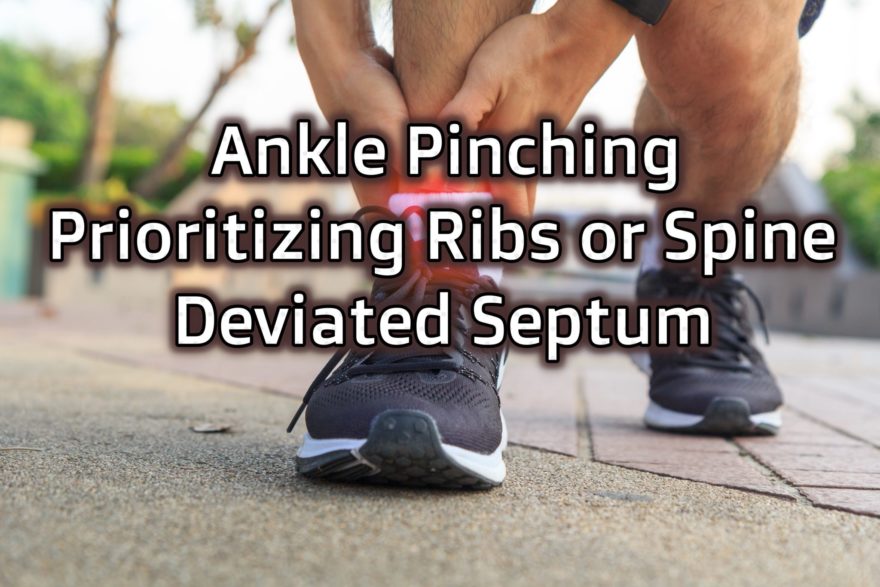
Movement Debrief Episode 78 is in the books. Below is a copy of the video for your viewing pleasure, and audio if you can’t stand looking at me. Here is the set list: What things should we consider with someone who gets anterior ankle pinching on movements? How does the ventral cavity impact the ankle? Are there any local things to do at the ankle? If I want to improve thoracic extension, do I need to address the ribs or the thoracic spine first? How can sinus issues affect movement variance? Should I get a deviated septum surgery? When is a surgical procedure like this warranted?
Read More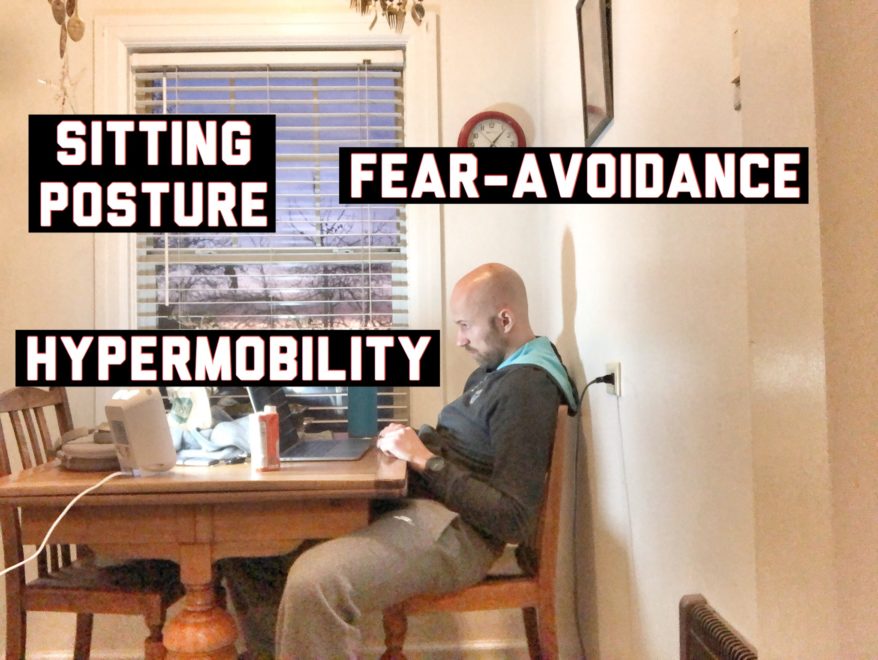
Movement Debrief Episode 72 is in the books. Below is a copy of the video for your viewing pleasure, and audio if you can’t stand looking at me. Here is the set list: Does sitting slouch = extended? Why do people appear flexed when they sit? What is going on when someone sits slouched? How should I work with someone who has a hypermobility syndrome? What is Ehlers Danlos? Are isometrics a worthy starting place? What about unstable surface training? What is fear-avoidance? How do I go about using education to reduce fear avoidance? What other tactics do I use to mitigate fear avoidance?
Read More
Movement Debrief Episode 68 is in the books. Below is a copy of the video for your viewing pleasure, and audio if you can’t stand looking at me. Here is the set list: What is perfect posture? Why do extension-based exercises not improve posture? How does respiration impact default posture? Why would the back knee bend in a yoga pose when it needs to be straight? What is occurring when we see knee bend when the hip is placed into extension? What can we do to rectify this issue? What are my thoughts on the SFMA? Why do I not use the SFMA? What is my current thought process instead? If you want to watch these live, add me on Facebook . They air every Wednesday at 7pm CST. Enjoy! and the audio version… Here were the links I mentioned: Check out Human Matrix promo video below Below are some testimonials for the class Want to sign up? Click on the following locations below: December 8th-9th, Charleston, SC February 2nd-3rd, 2019, New Providence, NJ (early bird ends January 4th) SIGN UP FOR THE REVOLUTION featuring myself, Pat Davidson, and Seth Oberst February 9th-10th in Boston. MA A bunch of stuff on improving posture can be found here. Here is a debrief on occlusion. Below is a picture of the high lunge pose Here is the hip separation debrief. Below is an activity that I use to improve hip separation. Here is the hip
Read More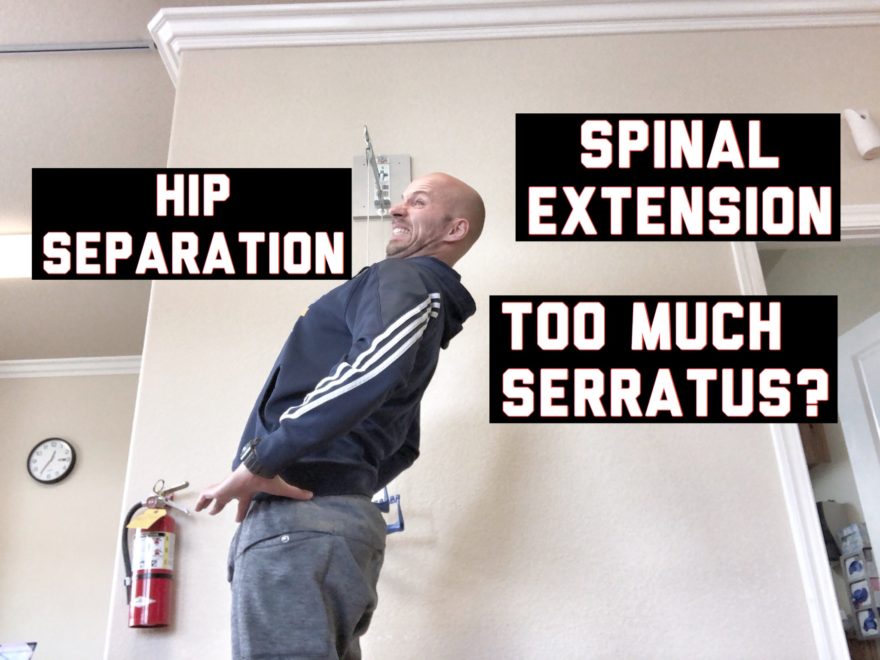
Movement Debrief Episode 67 is in the books. Below is a copy of the video for your viewing pleasure, and audio if you can’t stand looking at me. Here is the set list: What is hip separation? Why is hip separation necessary? How does one go about coaching hip separation? Do I teach clients to extend the spine? What is the role of serratus anterior? Can we have too much serratus anterior? What do we need for a good relationship between the scapula and the thorax? If you want to watch these live, add me on Facebook . They air every Wednesday at 7pm CST. Enjoy! and the audio version… Here were the links I mentioned: Check out Human Matrix promo video below Below are some testimonials for the class Want to sign up? Click on the following locations below: Portland, OR on November 10-11 December 8th-9th, Charleston, SC (early bird ends November 11th) February 2nd-3rd, 2019, New Providence, NJ (early bird ends January 4th) SIGN UP FOR THE REVOLUTION featuring myself, Pat Davidson, and Seth Oberst February 9th-10th in Boston. MA Bill Hartman Lucy Hendricks Hip Extension Debrief Below is the wall stride technique Below is a picture of serratus anterior from a superior view Here’s a signup for my newsletter to get nearly 3 hours and 50 pages of content, a free acute:chronic workload calculator, basketball conditioning program, podcasts, and weekend learning goodies: [yikes-mailchimp form=”1″ submit=”Get learning goodies and more”]
Read More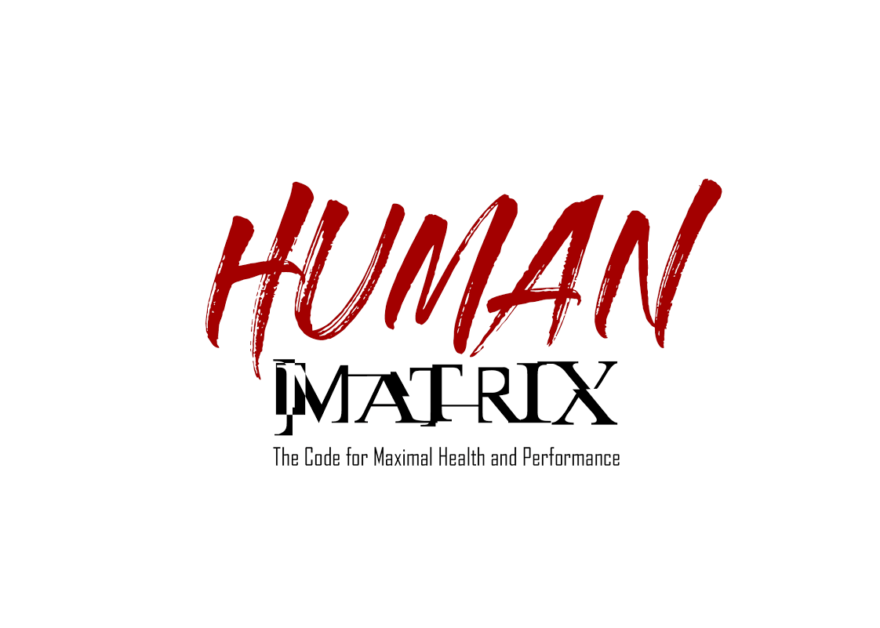
Do you… Have patients who hurt multiple areas and are unsure where to start? Have training clients who can’t perform the exercises you want to despite extensive coaching? Want to maximize your client’s movement capabilities better than ever before? Want to know why incorporating breathing into your skillset is exceedingly important? Then welcome to Human Matrix: The Code for Maximizing Health and Performance. A course where you will develop a thorough understanding of how to systemically view and affect movement. By entering the Matrix and affecting movement systemically, building up your client’s movement repertoire from the ground up better than ever before. What you’ll learn when you Enter the Human Matrix How to build a sound movement foundation to increase the exercise variations your clients and patients will be able to do. How to assess your client’s movement capabilities to make precise decisions for improving pain and movement quality. How to normalize range of motion of the entire body to both reduce pain and improve how your clients move with fewer exercises than you have ever needed before. How to effectively coach squatting, deadlifting, pushing, pulling, and more to build the fitness and resiliency of your clients. Course Outline Here is the schedule of this two day seminar: Day 1 9:30-10:30am: Model and Theory 10:45am-12:30pm: Axial Skeleton, Respiration, and Thorax Variability 12:30pm-1:30pm: Lunch 1:30pm-3:00pm: Thorax Variability 3:15pm-4:45pm: Pelvic Variability 5-6:30pm: Systemic Variability Day 2 8:30am-10am: Systemic variability 10:15am-12:30pm: Power Establishment – Mastering fundamental movement patterns 12:30pm-1:30pm: Lunch 1:30pm-3:30pm: Power Establishment
Read More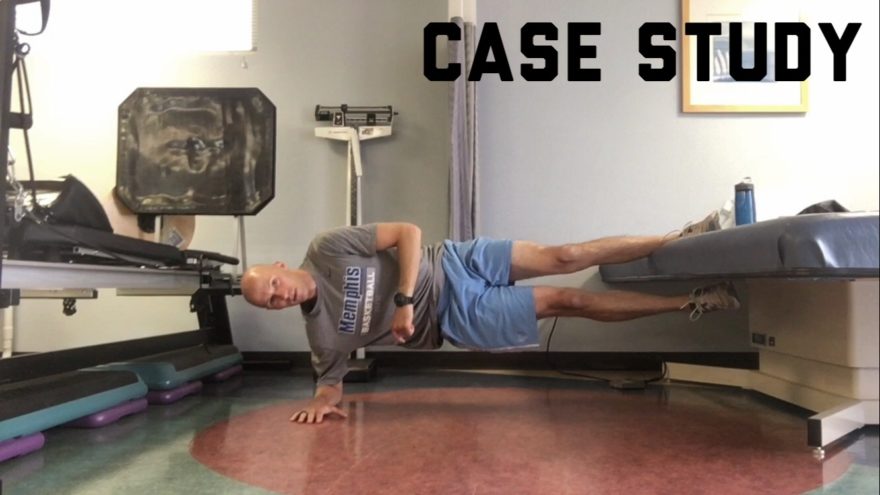
Case studies are much more valuable than many give credit for. It is this type of study that can often lead to sweeping changes in how further research is conducted, often create paradigm shifts in their own right. After all, there was only one Patient H.M. One thing that I wish I saw more in case studies was the clinician’s thought process. Why did they elect to do this treatment over that, what were they thinking when they saw this? How do they tick? I was fortunate enough to have an online client of mine suggest to that I make her a case study, and it was a very rewarding experience on both fronts. My hope is that you can see how a clinician thinks first-hand, and see the challenges a clinician faces… When you can’t work with your hands.
Read More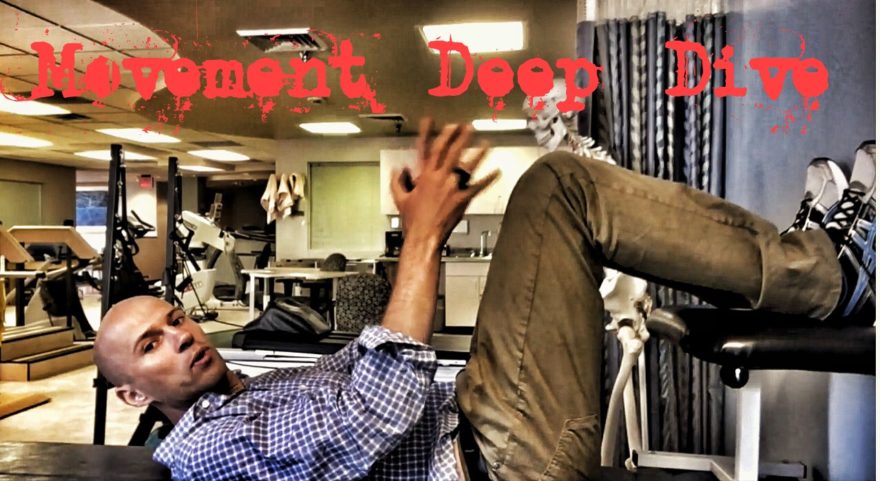
The Fundamental Rehab Technique It’s a classic that does so much more than the naked eye can see. This round of “Movement Deep Dive” focuses on the 90/90 hip lift, and some of my favorite variances off that move. I hope you have your pen and paper handy to take notes, because this video is a long one. If videos aren’t your thing, I’ve provided a modified transcript below. I would recommend both watching the video and reading the post to get the most out of the material. Learn on!
Read MoreThis is a chapter 8 summary of the book “Movement” by Gray Cook. What to Look For The SFMA breakouts are utilized to determine if one’s movement deficiencies have a mobility or stability origin. There are further possibilities in each of these categories. It Could Be a Mobility Problem There are two subsets of mobility problems that include tissue extensibility dysfunction (TED) and joint mobility dysfunction (JMD). From here, we can break it down even further in each subset. Here are some potential TEDs Active/passive muscle insufficiency Limited neurodynamics (they said neural tension; come on Gray!) Fascial tension Muscle shortening Hypertrophy Trigger points Scarring/fibrosis And here are some potential JMDs Osteoarthritis/arthrosis Single-joint muscle spasm/guarding Fusion Subluxation Adhesive capsulitis Dislocation It could be a Stability Problem These issues are also known as stability or motor control dysfunction (SMCD). Most conventional therapies would treat these complaints by strengthening the stabilizers, but this is problematic. When something works reflexively, how can we train something volitionally and expect changes? To train these muscles we must focus on proprioceptive and timing-based training. There are several examples of SMCD problems. Motor control dysfunction. High threshold strategy. Local muscle dysfunction/asymmetry. Mechanical breathing dysfunction. Prime mover or global muscle compensation behavior or asymmetry. Poor static stability, alignment, postural control, asymmetry, and structural integrity. Poor dynamic stability, alignment, postural control, asymmetry, and structural integrity. Relatedness Mobility and stability can influence one another. If I were to lose mobility at one segment, motor control can be distorted at nearby segments.
Read More